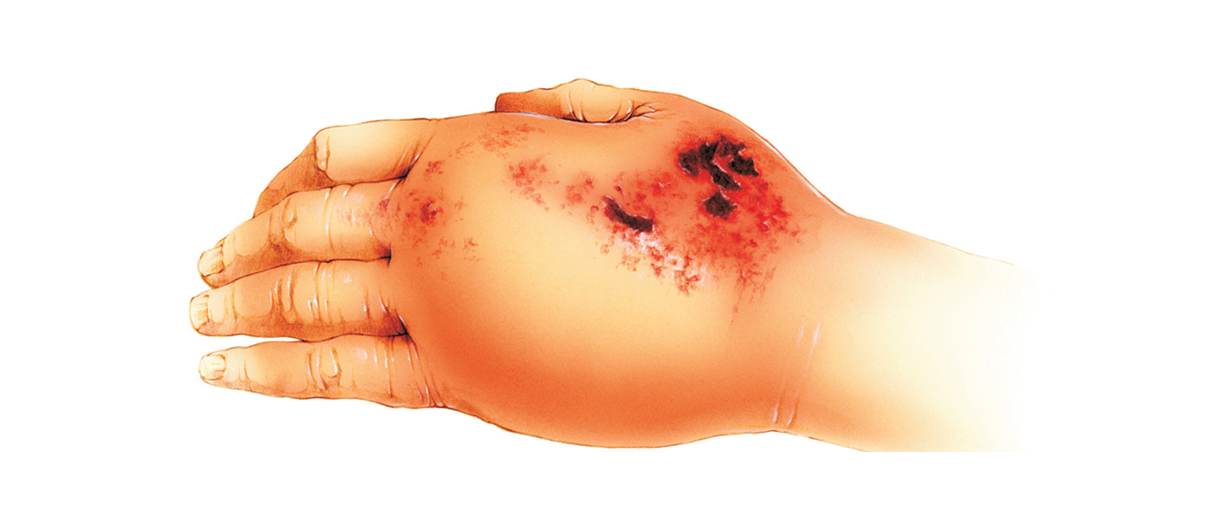Extravasation injury claims cost NHS £15.6 million
When any form of liquid accidentally leaks from a vein into surrounding tissues, it can cause serious harm to patients1. Leakage of a nonvesicant solution is called infiltration2. Leakage of a vesicant solution is called extravasation2.
Extravasation may lead to the following injuries: bruising, scarring, tissue damage, unnecessary pain, additional or unnecessary operations, cosmetic disfigurement and even death1.
When cause by leaked cytotoxic drugs, extravasation can take several hours or days to develop. The injury may not be noticeable at first.
A decade of extravasation injury claims
From April 2011 to March 2021, 444 extravasation injury claims were submited to the U.K. National Health Service (NHS)1. These claims cost the NHS an estimated total f £15.6 million11.
The total cost to the British healthcare system includes payment for1:
- Claimant legal costs
- NHS legal costs
- Damages
In its ‘Did you know?’ series, the U.K. National Health Service (NHS) Resolution published an analysis of extravasation-related litigation claims1: NHS Resolution. Did you know? Extravasation. Published online March 1, 2022. https://resolution.nhs.uk/wp-content/uploads/2022/03/Did-You-Know-Extravasation.pdf
The report features trends and key learnings. It also focuses on the factors that contribute to extravasation injury. Finally, it ends with a list of practice recommendations to help prevent this intravenous (IV) complication.
In the report, compensation claims are divided by specialty. Over half of claims come from paediatrics (23%) and oncology (19%).
More on this topic: Improving patient experiences by understanding infusate properties and their effects on vasculature
What are the main factors that could lead to extravasation injury?1
Infusion problems (29%) were identified as the most frequent factor for developing this type of injury. One reason for this was incorrectly selecting the pressure on the medication infusion pump. Another reason was a lack of compliance with manufacturers’ or local guidance on IV medication administration.
Inadequate nursing care is the second most frequent cause of extravasation (16%). This may be linked to a failure to act when patients complain of pain or discomfort around the injection site. Another factor could be delays in identifying extravasation injuries in their patients.
Medication errors ranked third as a factor that can lead to extravasation injuries (14%). These include incorrect medication, incorrect dose as well as the wrong route of administration.
The feet were the most frequent site where extravasation injuries occurred in children. These may be caused by patient movement or bandaging of the cannula that prevents access and observation.
More on this topic: NIVAS white paper: The benefits of a vascular access team
How healthcare facilities can help prevent extravasation injury1
- Make sure local guidance on extravasation is available to all healthcare professionals (HCPs)
- Provide training to front-line HCPs on the risk of extravasation and on treatment for extravasation injuries
- Review the reporting procedure and extravasation injury claims and make sure all HCPs are aware of the key learnings from them
- Include manufacturer’s guidance, evidence-based practice and patient support organisations in resources provided to patients on extravasation injury
The insights gained from this report will help HCPs to better manage this harmful and potentially fatal IV complication.
References
- NHS Resolution. Did you know? Extravasation. Published online March 1, 2022. Accessed November 9, 2022. https://documentcloud.adobe.com/spodintegration/index.html?r=1&locale=en-us
- Hadaway L. Infiltration and extravasation. Am J Nurs. 2007;107(8):64-72. doi:10.1097/01.NAJ.0000282299.03441.c7
This list of references to third-party peer-reviewed material and the sites they are hosted on are provided for your reference and convenience only, and do not imply any review or endorsement of the material or any association with their operators. The Third-Party References (and the Web sites to which they link) may contain information that is inaccurate, incomplete, or outdated. Your access and use of the Third Party Sites (and any Web sites to which they link) is solely at your own risk.
BD-78063




